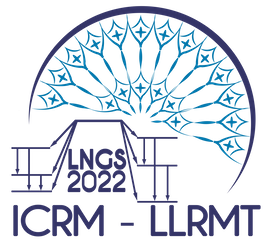Speaker
Description
The study of the origin of the Solar System can gain significant information from the characterisation of meteorites. However, these samples are quite rare and it is therefore of paramount importance to settle a completely non-destructive analysis procedure to preserve these materials. The idea is to perform a set of bulk and surface analysis in order to identify a rock as a meteorite and to characterise it in terms of its elemental and mineralogical composition.
In this framework, gamma-ray spectroscopy allows to identify the presence of cosmogenic radionuclides which are formed by the exposure to galactic and solar cosmic rays. Particularly important are $^{60}$Co (5.27 years) and $^{26}$Al (7 · 10$^5$ years). As a consequence, if the meteorite specimens are small or the date of the fall is expected to be more than a few half-lives of $^{60}$Co ago, low-background spectroscopy is needed, due to the low radioactivity levels. In our case, low-background gamma spectroscopy has been carried out at the STELLA facility within the LNGS, where we identified an average activity of (0.71 ± 0.05) Bq/kg for $^{26}$Al, which is consistent with the meteoric origin of the studied sample.
The great depth of penetration of neutrons in materials can be exploited to perform a bulk non-destructive analysis. In particular, we carried out Time-of-Flight Neutron Diffraction (ToF-ND) at the INES diffractometer at the ISIS Neutron and Muon Source in order to disclose the mineral phases contained in the sample, which can yield important information about the formation of the proto-planet from which the sample originated. The data analysis, performed with the Rietveld refinement procedure, enables to quantify and characterise the mineralogical phases within the sample. In our case, ToF-ND showed the presence of magnesium-based silicate minerals together with some pure and altered iron-based mineral phases.
Finally, by micro-Raman spectroscopy (μRS) and Energy Dispersive X-ray Spectroscopy (EDS), we derived the mineral and elemental composition of the sample, with the benefit of space-resolved measurements. In particular, the combined application of these techniques returned important information about the composition of each structure, including the glass and the iron alloys, which could not be studied with ToF-ND in detail as they are minority phases. Furthermore, these techniques returned important information which helped in the analysis and interpretation of data taken with other techniques.
In conclusion, our protocol has been successful in the characterisation of a stony meteorite and it will be applied to other classes of meteorites in order to verify its range of feasibility.

